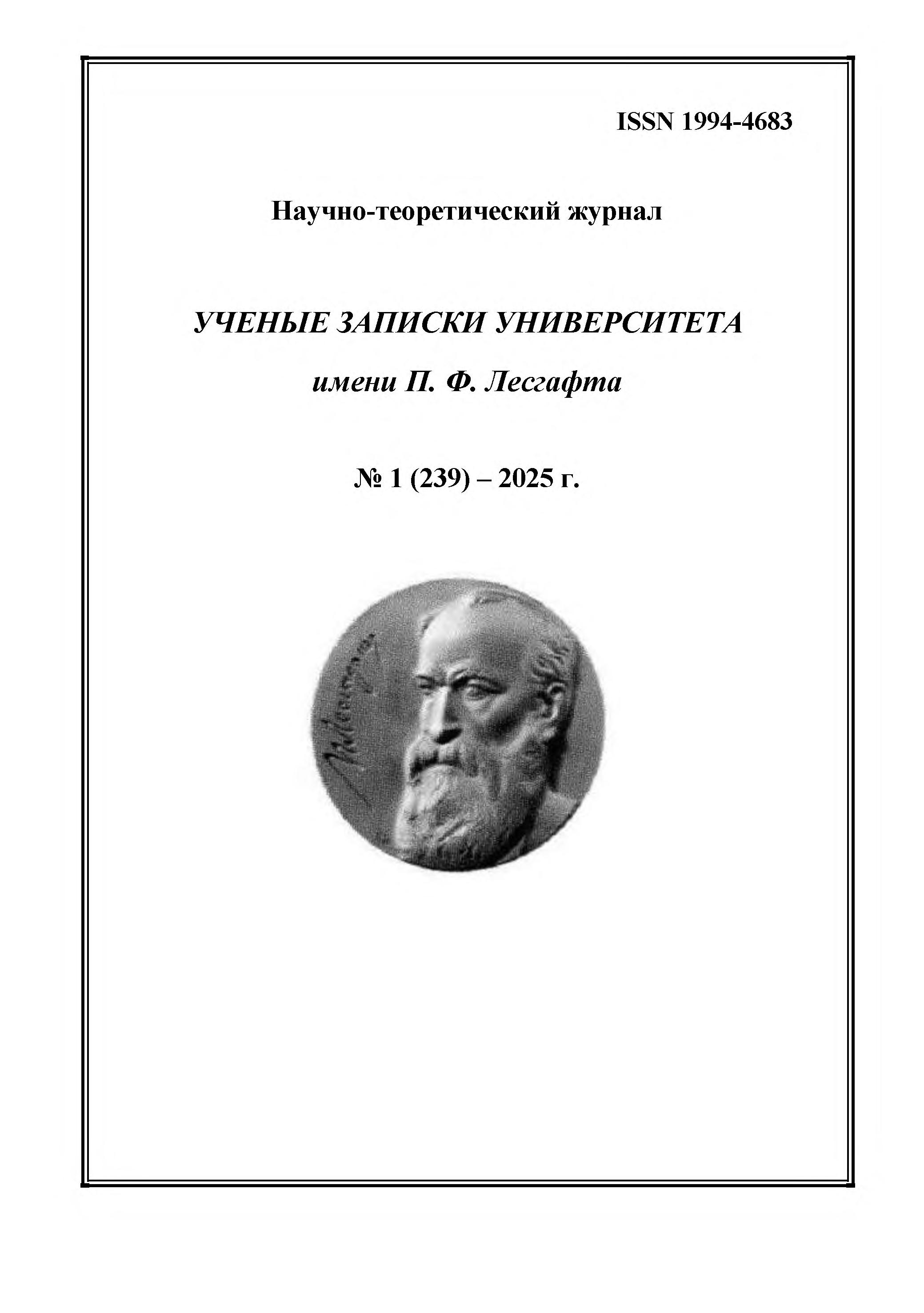Russian Federation
St. Petersburg, Russian Federation
CSCSTI 77.01
The purpose of the study is to analyze the state of physical activity among middle school students in China, identify issues, and propose countermeasures. Research methods and organization. Methods of analysis and generalization of scientific and methodological literature and normative documents of the People's Republic of China have been employed, along with surveys and methods of mathematical statistics. The empirical foundation of the research consists of official data collected by the Ministry of Education of the People's Republic of China in 22 provinces. Research results and conclusions. A comprehensive analysis of the physical activity status of Chinese secondary school students has been conducted. The study focuses on three key issues: the systematic lack of time allocated for physical education classes, the formalized content of physical education lessons, and the acute shortage of infrastructure for physical exercise. Data collected by the Ministry of Education of the People's Republic of China across 22 provinces reveals that only 38.7% of students meet the daily physical activity norms established in the National Action Plan for the Development of School Sports (2020). As practical solutions, the authors recommend: implementing multi-tiered regulatory measures and social campaigns; improving facilities for physical education, particularly in rural areas; optimizing the content of physical education lessons; and modifying the assessment system for students' physical fitness, including increasing its weight in admissions to higher education institutions. The aim of these measures is to overcome the existing imbalance between students' academic performance and their physical development. It is justified to assert that in order to achieve the goal of comprehensive development of middle school students, it is essential to unite the efforts of the school, family, and society to foster educational interaction and create a multi-level support system.
secondary education, China, physical activity, state standards, final certification, infrastructure, pedagogical control
1. Ministry of Education of China (2020), “National School Sports Action Plan Implementation Report (2020)”, Beijing, People's Education Press, 30 p.
2. Chinese Academy of Educational Sciences (2023), “Research on Regional Differences in Physical Health of Chinese Youth”, Beijing, Educational Science Press, 65 p.
3. General Administration of sport of China (2022), “White Paper on School Physical Education Curriculum Reform in China”, Beijing, Sports Press, 50 p.
4. Department of Physical, Health and Arts Education, Ministry of Education (2023),”National Report on Professional Development of Physical Education Teachers”, Beijing, Higher Education Press, 35 p.
5. China Social Survey Research Center (2023), “Report on Secondary School Students' Readiness for Physical Education Participation”, Beijing, Social Sciences Press, 20 p.
6. Department of Development Planning, Ministry of Education (2023), “Annual Report on Educational Infrastructure Construction in Rural China”, Beijing, Statistics Press, 100 p.
7. General Administration of Sport of China (2022), “Report on Safety Standards Implementation for Youth Sports Equipment”, Beijing, Sports Press, 70 p.
8. Beijing Urban Planning Institute (2023), “Spatial Planning and Utilization of Sports Facilities in Urban Schools”, Beijing, Urban Planning Press, 80 p.
9. Ministry of Education of China (2023), “Guidelines for Prevention and Control of School Sports Safety Risks”, Beijing, People's Education Press, 55 p.
10. State Council of China (2023), “Opinions on Deepening the Reform of Comprehensive Evaluation for College Admissions”, Beijing, People's Press, 45 p.
11. Department of Education of Guizhou Province (2023), “Case Studies of Low-Cost Sports Facility Renovation in Rural Schools”, Guizhou, Education Press, 35 p.
12. Shanghai Municipal Education Comission (2023), “Innovative Practices of Space Utilization ib Urban Schools”, Shanghai, Education Press, 30 p.







